Resolving the fibrotic niche of human liver cirrhosis at single-cell level
- PMID: 31597160
- PMCID: PMC6876711
- DOI: 10.1038/s41586-019-1631-3
Resolving the fibrotic niche of human liver cirrhosis at single-cell level
Abstract
Liver cirrhosis is a major cause of death worldwide and is characterized by extensive fibrosis. There are currently no effective antifibrotic therapies available. To obtain a better understanding of the cellular and molecular mechanisms involved in disease pathogenesis and enable the discovery of therapeutic targets, here we profile the transcriptomes of more than 100,000 single human cells, yielding molecular definitions for non-parenchymal cell types that are found in healthy and cirrhotic human liver. We identify a scar-associated TREM2+CD9+ subpopulation of macrophages, which expands in liver fibrosis, differentiates from circulating monocytes and is pro-fibrogenic. We also define ACKR1+ and PLVAP+ endothelial cells that expand in cirrhosis, are topographically restricted to the fibrotic niche and enhance the transmigration of leucocytes. Multi-lineage modelling of ligand and receptor interactions between the scar-associated macrophages, endothelial cells and PDGFRα+ collagen-producing mesenchymal cells reveals intra-scar activity of several pro-fibrogenic pathways including TNFRSF12A, PDGFR and NOTCH signalling. Our work dissects unanticipated aspects of the cellular and molecular basis of human organ fibrosis at a single-cell level, and provides a conceptual framework for the discovery of rational therapeutic targets in liver cirrhosis.
Conflict of interest statement
The authors declare no competing financial interests.
Figures
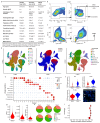
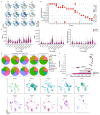
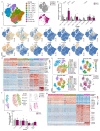
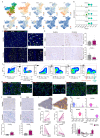
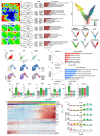


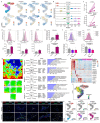

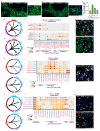
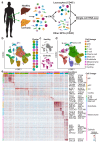



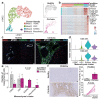
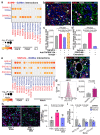
Comment in
-
Clues to cirrhosis - a focus on fibrosis.Nat Rev Gastroenterol Hepatol. 2019 Dec;16(12):705. doi: 10.1038/s41575-019-0232-9. Nat Rev Gastroenterol Hepatol. 2019. PMID: 31649342 No abstract available.
-
The Transcriptome of Hepatic Fibrosis Revealed by Single-Cell RNA Sequencing.Hepatology. 2020 May;71(5):1865-1867. doi: 10.1002/hep.31155. Hepatology. 2020. PMID: 32017148 Free PMC article. No abstract available.
References
-
- Ramachandran P, Henderson NC. Antifibrotics in chronic liver disease: tractable targets and translational challenges. Lancet Gastroenterol Hepatol. 2016;1:328–340. - PubMed
Publication types
MeSH terms
Substances
Grants and funding
- MC_UU_00007/15/MRC_/Medical Research Council/United Kingdom
- MC_PC_15041/MRC_/Medical Research Council/United Kingdom
- 22231/CRUK_/Cancer Research UK/United Kingdom
- MC_PC_15049/MRC_/Medical Research Council/United Kingdom
- MC_PC_17159/MRC_/Medical Research Council/United Kingdom
- RE/18/5/34216/BHF_/British Heart Foundation/United Kingdom
- MR/P008887/1/MRC_/Medical Research Council/United Kingdom
- G1002033/MRC_/Medical Research Council/United Kingdom
- G0600033/MRC_/Medical Research Council/United Kingdom
- 103749/WT_/Wellcome Trust/United Kingdom
- RM/17/3/33381/BHF_/British Heart Foundation/United Kingdom
- MC_PC_15075/MRC_/Medical Research Council/United Kingdom
- MR/N008340/1/MRC_/Medical Research Council/United Kingdom
- G84/6205/MRC_/Medical Research Council/United Kingdom
- MR/N022556/1/MRC_/Medical Research Council/United Kingdom
- MC_UU_12008/1/MRC_/Medical Research Council/United Kingdom
LinkOut - more resources
Full Text Sources
Other Literature Sources
Medical
Molecular Biology Databases
Research Materials
Miscellaneous

